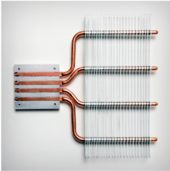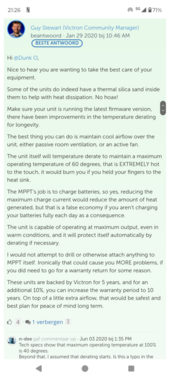AlpineJoe
Solar Enthusiast
- Joined
- Jun 13, 2022
- Messages
- 229
This isn't a linear regulator where the excess is wasted as heat, it's a switcher. And yes, in the linear region, a lot of heat is generated, hence why switchers turn on the mosfet as fast as possible to minimize being in this region. That leaves the RDSon resistance of the mosfet itself as the main loss, which can be extremely low. Using the lowest resistance inductor minimizes losses there and Victron might even be using active rectification to replace the flyback diode to increase the efficiency even more.Transistors cannot be switched without heat being generated.
That's kind of a given.
Given Victron's excruciatingly low idle draw on their inverters, I assume they probably apply some of their tricks to their MPPT to avoid generating unnecessary waste heat.
As far as 'wasting' power, the Victron doesn't have to do it by converting it to heat. It can just not convert all of it. Run the panels at not their optimum point to reduce the output current would do it. You probably wouldn't see the waste then either as your calc of input V x I = output V x I would still come out close. You'd be none the wiser other than noticing less production for the day.




